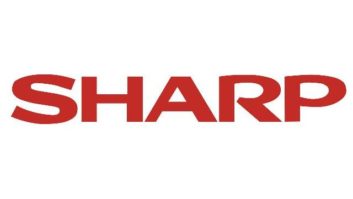LAS VEGAS – In a frank discussion concerning one of his company’s most difficult years, Sharp Electronics’ global president and COO Mikio Katayama largely blamed the crippling appreciation of the yen and a corresponding depreciation of the Korean won for what he called “a terrible year” in fiscal 2009.
“We are looking for a big change this year,” Katayama said in a meeting with reporters at International CES.
Katayama, who is the sixth-generation president since Sharp’s founder, acknowledged feeling some embarrassment at being the first president to experience a quarterly loss – in the April through June period last year – on his watch.
“But thanks to everyone’s support we were able to record a good profit for the July through September quarter,” he said. “With that quarter we were able to record an operational profit for the semiannual closing – March through September – and we are very positive that we will be able to record a profit for the entire physical year ending March of this year.”
He said Japanese electronics manufacturers were “handicapped” last year due to “the higher appreciation of the Japanese yen,” while the Korean won saw a depreciation in value, giving Korean companies including Samsung and LG Electronics a significant advantage.
Katayama explained the value basis of market demand for TV products in the United States and Western Europe is “saturated,” as is global demand for mobile handsets.
Meanwhile, Sharp lost significant market share for TVs – primarily among mass-merchant chains – in the United States and Western Europe, which Katayama called “an opportunity.”
“Usually it is difficult to increase market share under saturated, limited demand, but since our market share was so terribly damaged, it is not difficult for us to retrieve market share under such saturated demand,” he said.
In response, the company president said Sharp implemented a tremendous change in its organization, converting its appliance division into the “health and environment division” while opening a new 10th– generation LCD panel production facility in Sakai City, Japan, last October.
He said the competitive advantages delivered by the new LCD facility are so high that it should enable Sharp to maintain its profitability even with the inflated value of the yen.
The new plant allows production of 18 40-inch panels from a Gen 10 substrate compared to eight 40-inch pieces from a Gen 7.5 substrate, he said.
The facility will also enable eight pieces of 60-inch glass from a Gen 10 substrate, compared to two or three from a Gen 7.5 substrate.
Sharp’s LCD panel technologies will produce “a much brighter 3D display than any of the competition,” he said.
“With this we can provide our partners Sony, Philips and Toshiba with our panels for their 3D products because they are ideally suited for 3D,” Katayama said, of the company’s panel production arrangements with competitive set maker/customers.
Although it will be supplying other set makers with LCD glass from its new facility, Sharp, he said, will use its Quad Pixel technology to differentiate its TV lines at major retailers in the United States starting this spring.
Katayama said the technology should help Sharp reclaim lost TV market share in the United States, by increasing sales in regional and national electronics chains that have selling floors that can demonstrate the technology’s advantages.
The Quad Pixel Technology uses a new color filter system that brings a fourth color – yellow – to the red, green and blue primary colors to significantly expand the gamut of displays in the yellow range while sharpening picture detail and expanding brightness.
The combination of the improved production capability and the introduction of Quad Pixel TVs will enable Sharp to retrieve up to 10 percent of its lost market share in the North American market this year, he said.
In 2010, Sharp will look to consolidate its brand position throughout the year, giving it the ability to “make a stronger leap with our brand starting in 2011.”
As for the establishment of the new health and environment division, the company, he said, will soon begin to ramp up construction of thin-film solar panels intended for large-scale solar power-generation applications.
He said Sharp recently established a joint venture with an Italian company for a thin-film solar-panel factory in Sicily to help meet demand in Europe. For the next step the company is studying the best location in the United States and other regions for the establishment of additional thin-film solar panel factories.
Katayama predicted that new green energy policies in the United States will lead to the construction of many new solar-power plants in the near future.
Sharp is also moving into the lighting market, adapting LED technologies used for its newer TVs for other lighting applications outside.
Despite being a newcomer to the market, Sharp was able to take 60 percent share of the LED lighting market in Japan, where companies including Panasonic, Toshiba and Hitachi have been working on lighting for years, he said.
“Our plan is to launch an LED lighting business to supply the United States and Europe by the end of this year,” he said.
He acknowledged that breaking into the lighting market in the United States presents a significant challenge, but Sharp’s LED technologies have very high performance levels.
The health and environment division will also further development of the growing Plasmacluster Ion business.
The technology is used to remove allergens from the environment.
“This is already becoming a good pillar for our health-related business, and we are in the middle of developing this for the United States and Japan,” he said.













